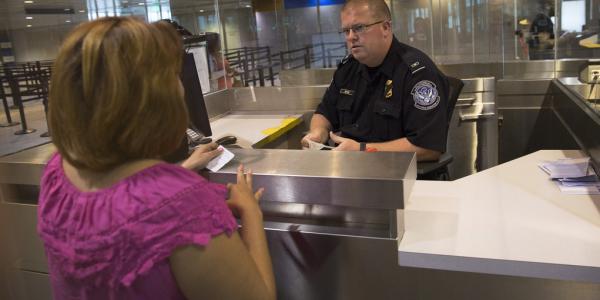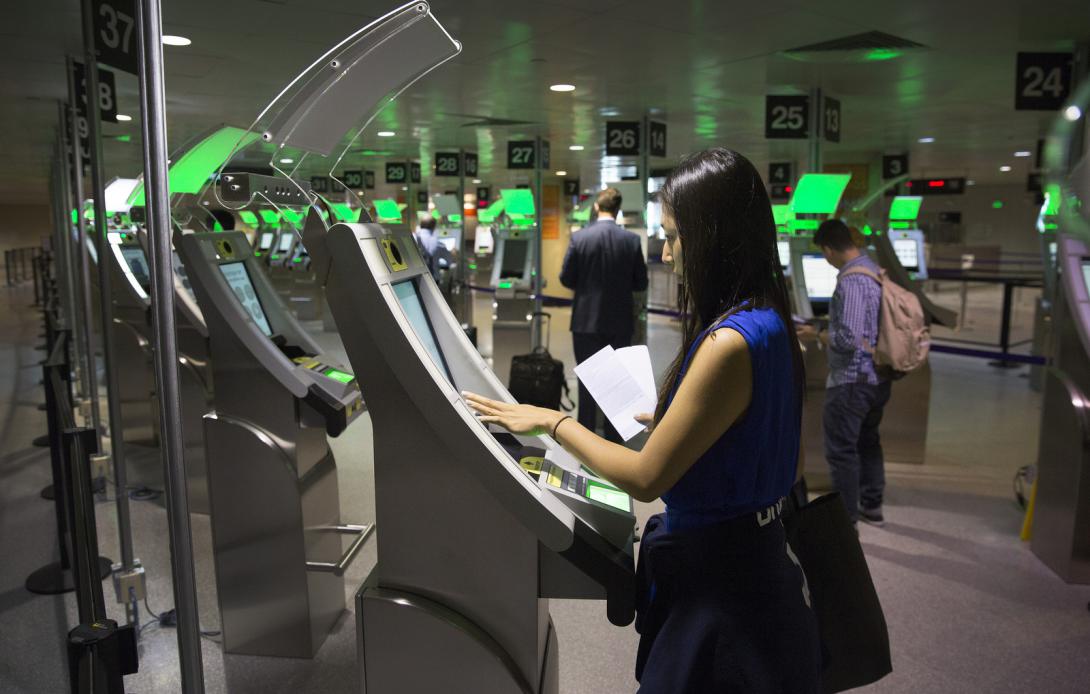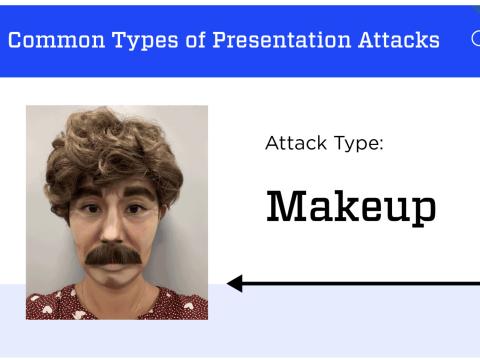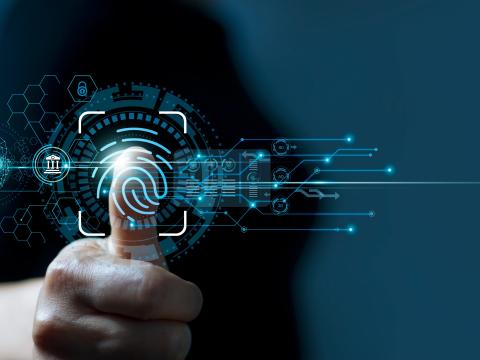When Your Face Is Your Form of ID
Imagine, as an American citizen, returning to the United States from an international flight, going through customs and never pulling out a passport. For U.S. Customs and Border Protection, which is working to expand its entry and exit biometric-based security, this is an emerging reality. Using advanced facial recognition technology, customs officers at entry points in U.S. airports will be able to identify travelers long before they reach the customs desk.
Customs and Border Protection’s (CBP’s) 1-to-1 Facial Comparison Project is part of this goal. The idea is to use airline passenger lists, facial recognition cameras and comparison photographs from passport microchips to verify re-entry of U.S. airline passengers. The technology scans passenger faces, uploads the pictures to the cloud and compares the real-time images with a gallery of passport photos based on the passenger list to see whether the images match, explains Kim Mills, director of the CBP’s Entry-Exit Transformation Office. The Department of Homeland Security oversees the CBP.
For the entry system, the CBP is using about 28 facial recognition devices on a permanent basis at John F. Kennedy International Airport in New York and Washington Dulles International Airport.
“This is our first experience [with] facial recognition,” Mills notes. “We have biometrics [i.e., fingerprints] on all the individuals coming into the United States, except for U.S. citizens. This program adds to that. It is a way for us to guarantee that you were the rightful owner of the passport you were presenting to CBP.”
The agency successfully tested the program first at Dulles and then expanded it to JFK. The CBP plans to take it further, essentially automating verification for all American citizens. Traditionally, customs officers have to visually compare a person standing before them with his or her passport photo, Mills offers.
“In the future, it would all be done easily with facial recognition, yet you are increasing the security levels and getting verification that it really is the U.S. citizen who is presenting the passport,” she says.
The sweeping change stems from shortly after the 9/11 attacks, when Congress mandated that the DHS identify foreign airline travelers coming into the United States through digital fingerprints. At the time, nothing was put in place for U.S. citizens returning home.
Lawmakers also mandated that the DHS institute a biometric identification program for foreign nationals leaving America. Since 2004, the CBP has been working to implement a program, but not without challenges. First, unlike the customs entry process, airport “exits” were not designed for passenger control. Airports are privately owned, and there are no federal inspection areas by each gate or jetway.
Early exit programs failed because either travelers did not use them, or the programs required an enormous staffing increase, Mills relates. Also, the biometric technology was not as advanced as it is today. Another key consideration was where to locate the equipment within an airport terminal.
One trial from 2004 to 2007 included kiosks, handheld devices and workstation attendants to biometrically identify passengers departing from 12 airports and three seaports. The problem was that the kiosks were in obscure locations at the far end of terminals. “People had a hard time finding where to actually register biometrically on departure,” Mills says. “And when faced with the choice of making a connection or registering their biometrics, passengers just went to their connections. Compliance was so low that we needed a second look at the best way to implement a biometric program.”
In 2009, the CBP rolled out two additional pilot exit programs. One was in Detroit and involved handheld devices, along with so-called “jump kits,” which included fingerprint scanners and document readers. Right after having their boarding passes scanned at an airline gate, passengers would advance down the jetway to a team of CBP officers. Foreign nationals were directed to an officer with a jump kit to capture fingerprints and scan documents. Those officers could immediately handle any problems, and if there were no issues, passengers could board the plane.
“This pilot program showed that, OK, we can do biometric exit,” Mills says. “But since it would involve putting CBP officers in every jetway of every departing aircraft, the number of officers needed would be astronomical.”
At JFK, 36 international flights depart within one- to two-hour intervals, meaning that the CBP would need 36 teams of five to seven officers on each jetway just to handle those flights. “It would be so expensive and essentially double the entire staff of CBP,” Mills clarifies. “It was just not feasible.”
The CBP located the second pilot exit program at a Transportation Security Administration (TSA) checkpoint in the Hartsfield-Jackson Atlanta International Airport—before passengers even got to their gates. Officers checked the TSA line for foreign nationals departing that day on international flights, took them for fingerprinting and then brought them back to the line.
Again, the CBP found that it could conduct biometric processing at the TSA checkpoint, but it would require a significant uptick in staffing. Also, people could still turn around at the checkpoint. There was no guarantee that they would board the plane. “We determined that we needed to identify that person biometrically at a point of almost no return, where it guaranteed that the person actually did depart the United States,” Mills imparts. “This is where we took a step back and saw that these options were not really viable.”
The CBP’s latest endeavors benefit from the experience of the pilot programs, better biometric technology and the cloud, Mills declares. In addition, Congress authorized the agency to spend up to $1 billion on the effort, collected from certain visa surcharges over the next 10 years. The fees were assessed last year and became available this fiscal year.
With the funds, the CBP is expanding its Biometric Exit Mobile (BE-Mobile) project, which involves a handheld biometric device similar to one the agency tested in 2009. The improved technology allows officers to swipe travel documents on an Android phone platform and take fingerprints using a scanner attached to the top of the device. Although it gives the CBP the ability to biometrically verify an individual leaving the United States, the technology is a secondary mitigation tool and not to be used on everyone. “BE-Mobile also serves as an enforcement tool, with a query ability to find out about individuals,” Mills imparts. “If you have an issue with someone departing the country, and we are already using facial recognition to verify that person, BE-Mobile is a backup to that facial recognition system.”
BE-Mobile is ideal for smaller airports with only a couple of departing international flights in an afternoon, she shares. The technology allows officers to move to certain locations quickly when necessary. Also, the CBP avoids having to add extensive exit infrastructure and personnel.
The goal is for BE-Mobile to be used in all U.S. airports. The program began in 10 airports and has now deployed to 25. Presently, the CBP is conducting a study to see which smaller airports could use BE-Mobile with additional biometric technology at passenger exits.
Another major exit program is the CBP’s Sprint 8, which is at eight major airports and is similar to the facial recognition program at Dulles and JFK. The CBP launched pilot programs this year and last year in Chicago, Atlanta, Houston and Washington and plans to expand to more airports soon.
“We have found that facial recognition works very well,” Mills says.
But it has limitations. The CBP found that if the gallery of passport photos is too large, then the system will produce false positives. “By face, you’ll match to everybody, although the match score will be extremely low,” Mills explains.
Instead of building a broad photo gallery, the agency is now creating a gallery for each flight based on its passenger list.
“On a certain flight that is departing the United States today, we know who the 175 people are from the manifest, so we can go and build the facial gallery of just those 175 people and store it in the cloud. Then, when the camera is activated and takes your picture as you are departing, we are only querying that small gallery for facial recognition,” Mills says.
Because the CBP again faces the question of where to locate the facial scanners for exiting passengers, the program will test various options—before or after the gate, or down the jetway. At some airports, the facial recognition system is positioned after passengers scan a boarding pass with the airline. “At Dulles, it’s the other way around,” Mills says. First, the system scans the passenger’s face, then it sends the photo to the cloud to do the comparison, and a light indicates if there is a match. If so, the passenger steps up to the gate agent to scan his or her boarding pass, then to access the aircraft. In Atlanta, passengers complete the facial scan in the jetway, after passing through the gate. The CBP is evaluating these different methods to see which one is best.
The agency recognizes that passengers must complete a two-step process: passing through the CBP’s facial recognition system and scanning their boarding pass with the airline. The CBP will continue to make improvements so that “it is more of an integrated process versus the current two-step process,” Mills says.
By February, the CBP will have the foundation to scale up to support biometric exits at all airports over the next several years. The agency will continue to work with airlines, airports and other stakeholders to reach this goal, Mills asserts.






Comment
The high security risk world
The high security risk world-wide made the evolution of the biometrics identifications a necessaty. I also see the benefits in the speed and simplicity of the ID control. Needs new developments in the platforms to decrease failure rates.
Comments